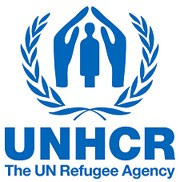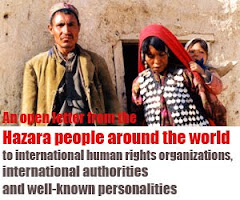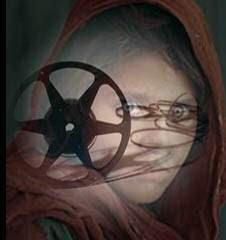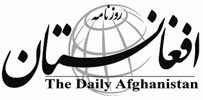

Part one
(Written by Basir Begzad)
Translated by Amin Wahidi
Blogger’s note: This research article is written in Dari Language by Basir Begzad a freelance writer- journalist in Afghanistan and was first published in NOMA website (Civil Movement of Afghanistan) and then it has been translated for this blog, by the permission of its writer.
This article is the result of Mr. Bekzad’s research about the roots of contemporary fundamentalism in the region and in Afghanistan. Reading this episodic research article you will know enough about how the ominous phenomena of the contemporary Islamic extremism and fundamentalism first was established in the Indian sub-continental areas that included today’s Bangladesh and Pakistan, and then in the late years entered into Afghanistan and how rooted the contemporary terrorism out of it which endangers and challenges the security of the whole world today.

In addition to having read the reports, available notes and interviews with the survived or captured suicide- bombers, we have been collecting such articles and news from different resources as a part of research for the enrichment of the screenplay “The Keys to Paradise” that is written by Amin Wahidi.
This article may help NATO and the international community to know more about the roots and background of the black phenomena of terrorism and how to coup with it in their military campaigns and political decisions in Afghanistan.

Although lately it is heard that the armed extremist militia in the Free Tribal Areas of the North West Frontiers province of Pakistan have announced cease fire with the government and since then the number of attacks have been increased in Afghanistan which is assumed to be a change of plan and concentration of the terrorists more in Afghanistan.

But it is believed by most of the Afghan intellectuals and politicians that the terrorism should be eradicated from its roots from the areas where it has risen from, so the anti terror campaign should not be confined within the Afghan borders but also much further out of borders of Afghanistan.
Writer’s note: The political chaos in Pakistan has its direct effects on the situation in Afghanistan. Or from the other aspect, we can still say that “the social and political chaos in Pakistan first has its negative effects on the foreign policy of this country, because the chaos and disorders of few decades in this country have kept the government busy in its internal issues and affairs. This issue prevents Pakistan to allocate budgets and resources on foreign issues and do the follow ups (*translators note: if Pakistan was kept busy within its internal issues, there may not have been time and resources to interfere in Afghanistan issues). In the second phase these disorders (political and security) have effects on the fragile situation of Afghanistan.

The acme of this influx/ has been accompanied by the formation of extremist and Islamic fundamentalist movements in Pakistan that turns back to the eighteenth century in this country.
After becoming an independent state and separation from India, Pakistan has always been the center of crisis in the region and a good place for formation of ideological movements of extremist Islamists. In this case, the accurate recognition of the ideological Islamist movements in Pakistan and how they are formed and how they have promoted their influences in Afghanistan, there is need of deep strategic studies.

In this writing the ideological infrastructures of the extremist Islamic movements in the Indian sub-continent, especially in Pakistan are being reviewed and analyzed.
There are three main and influential movements that have been nourishing the thoughts of Islamic ideology in Pakistan that have root back in the Islamic Ideology that existed in the colonized India ( prior to breaking up into three parts; Pakistan, India and Bangladesh).

The first movement:
This movement is rooted from the fundamentalist ideologies of Shah Wali Dehlavi (1703- 1762). Shah Wali movement was formed first for the brightening the mind of people with religious thoughts and to fight against the superstitions which were growing rapidly in the lives of Indian Muslims that time. After Dehlavi, his son Shah Abdul Aziz succeeded and then his grandson Shah Ishmael (1781- 1831) changed it into a social -political movement in India. This movement stood against the British colonization of India and took a political position that gained a lot of adherents for it.

As a result of its influence, one of the main scholars of Shah Wali School, a person called “Mohammad Qasim Nanaa Tavi” established a madrasa called Dewbandi in Uttar Pradesh state of India in 1867 that is very famous today.
Soon this religious school was changed into a completely ideological school and the scholars who studied there today were and are called “Dewbandia” that is a title of pride and honor for those who are entitled “Dewbandia”.
The founders of this school were the extremist Hanafi sect followers whose studies were based on beliefs and thoughts of Asharia.

This religious school in its influence climax in political arenas of India founded the Jamiatul Ulama e Hind or the Movement of Jamiatul Ulama in India in the year 1919 and became a gathering point of its followers in the world. After separation of Pakistan from India, the branch “Jamaat Islami” of this movement under leadership of Maulana Bashir Ahmad Usmani started its activities in Pakistan and soon became one of the important political movements in this country.

Maulana Fazlu Rahman
Currently this party “Jamaat e Ulama e Pakistan “has been divided into two parts; majority and minority and Maulana Fazl u Rahman leads the major part and the minor part is lead by Mulana Sami ul Haq.

Maulana Sami ul Haq
While both leaders are Pashtoon they are strongly in favor of Pashtoons sovereignty in Afghanistan and Pakistan.
Religiously they believe in SALFA Scholars and are against IJTEHAD and Modernism in religion.
And politically these two Dewbandi Pashtoon leaders are in favor of an Islamic Government like the Taliban’s and have very strong religious laws for the government to control the people.
The fundamentalist groups have an extra ordinary influence on North West Frontier Province of Pakistan especially the Free Tribal Areas.

The Second Movement:
The second ideological movement is the movement of Maulana Abu Aala Maudoodi(1903- 1979). The different scholars have different thoughts about this movement. Some have considered it as the extremist Islamic movements in Pakistan and name it as Ekhwani branch of Pakistan. Some think it is influenced by the thoughts of Shah Wali Dehlawi of the eighteenth century that were quite different from “Jamaat e Ulama e Pakistan”.
Conversely than Maulana Fazl u Rahman and Sami ul Haq, Maulana Maudoodi believed in a multi party political system and free elections and was in favor of a modern governmental system.
Maulana Maudoodi founded JAMAAT E ISLAMI in 1941 which is the biggest religious- political Party in Pakistan and presently Qazi Hussain Ahmad leads it.

Qazi Hussain Ahmad
Qazi Hussain Ahmad who believes in Islamic unity, like Maulana Fazl u Rahman and Sami ul Haq, has supported the Afghan Jihadi leaders in Peshawar during the Jihad time“holy war” of the cold war against the Soviet Union.
He had closer relationship with Hezb e Islami “Islamic Party” lead by Hekmatyar and Jamiat e Islami lead by Burhanudin Rabani.
These two famous Afghan Jihadi leaders supported the Afghan Taliban when they had newly appeared as a movement and it is said that they did this support under the pressure of Qazi Hussain Ahmad and then when later Burhanudin Rabani fought against the Taliban Qazi Hussain Ahmad has broken his relationship with him while Hekmatyar has still kept his relationship with Qazi Hussain Ahmad.

The third movement: The third movement refers to thoughts of “Sir Sayed Ahmad Khan” 1817 – 1898. He has appeared with liberal thoughts. This religious leader believed that the religious relations should be direct to the Holy Quran and no other go- between were needed (against two other movements). He questioned the role of SONNAT and EJMA* in the religious references.
He was affected by the European intellectuality analytic of the nineteenth century and therefore relied on the scientific interpretation of the Holy Quran which caused the anger of the other movements. The university educated Muslims and to some extend Muslim League Party are the adherent of this movement.

These three movements include the majority Muslims of Pakistan. These movements have a lot of pros and adherents among different categories of the people; the religious scholars, the university students and the labor group, therefore they affected the major political games of the country and the government of Pakistan has often been affected by these movements.
In spite of this overall category in university level, religious institutions and labor group, we can still categorize it in another way that includes the religious scholars and religious Madrasas.

Most of the religious schools and scholars in Pakistan are divided into two major groups according to their religious lessons and ways; The Dewbandi and the Brelwi group.
These two major groups represent two kinds of religious exegesis (within the frame of Hanaffi sect) which has their own political parties.

The DEWBANDIS ideologically are identical to WAHABIS that has sensitivity against the other sects of Islam. This group has an extreme and specific interpretation of Theism and Heathenism but the BRELWIS have more flexibility and never had a draconian interpretation and are not sensitive with the other sects of Islam and are mostly engaged with mysticism.
The founder of Brelwi School was Ahmad Reza Khan Brelwi 1856- 1921. This school was found against the ideological school of Mohammad ben Abdul Wahab and against the religious thoughts of Shah Wali Alla and the Dewbandi scholars. The political representative of this religious school in Pakistan is the group of Jamiate Ulama e Pakistan lead by Maulana Shah Amad Noorani and Abdul Satar Naizi.

The Dewbandi School in Pakistan is the representative of the Official religion in this country and has majority number of the Suni Muslims and the number of its followers is increasing day by day.
Especially during the last two decades because of improvement of extremism in the region and investment of Arab countries such as Saudi Arabia and support of General Ziaulhaq government, it has been accelerated tremendously and many groups were covered under the name of Dewbandi Regiment.

The main dependent groups of this religious school are; JAMIAT e ULAMA e ISLAM, SEPAH E SAHABA and AHL e HADES. These three groups belong the Dewbandi Religious School and follow the same slogans and mottos and have the same foreign supporters. Out of these three groups, JAMAIAT E ULAMA E ISLAM lead by Maulana Fazl u Rahman and Maulana Sami ul Haq has been appeared as an influential political party in the politics of Pakistan while SEPAH E SAHABA AND AHL E HADES are engaged in cultural and military activities.

After this categorizing and division, we discuss the relationships of these ideological movements with some of the Islamist movements in Afghanistan;
The Taliban movement has a close relationship with Dewbandi Religious School of Pakistan and it is said that MAULANA FAZ U RAHMAN and MAULANA SAMI UL HAQ have been the main founders of the Taliban and since then have been supporting them with logistical resources and human forces, because they and the Taliban belong to the same ethnic and have the same language of have desire of the same kind of government.
MAULANA FAZ U RHMAN AND SAMI UL HAQ are Pashtoon and have extraordinary influence in Baloochistan and NWFP provinces of Pakistan, on the other hand the religious students of Afghanistan have close relationship with DEWBANDI SCHOOL and are respected by the religious scholars of this country.

The group AHL E HADES after rapid growth of JAMIAT E ULAMA has established many madrasas in NWFP and as it is seen they have even founded madrasas in ATRAK, AKORA and DAR E KONAR within Afghanistan territory.
The religious students of southern and eastern regions of Afghanistan are often in contact with madrasas of NWFP while the religious students of south and south west of Afghanistan travel to Baloochistan Pakistan in order to learn religion lessons therefore the influence of religious schools in Pakistan has a remarkable role on the spreading and transforming their ideological thoughts to Afghan extremists and the religious schools or madrasas are considered to be holy places by these religious students.
They influenced and affected Afghanistan when the JIHAD (the holy war) period began, and it increased when many religious scholars were sent to Afghanistan to lead the JIHAD and the war.

Although the streaks of Dewbandi School ideology was entered in Afghanistan thereafter, but because it was unaccustomed with the official religion of Afghanistan it did not succeed to infiltrate among the Afghan Muslims.
Oliver, Rowa*, the western researcher on Afghanistan issues writes; “after break-up of India in 1947 most of the Afghan religious students went to the borders who were mostly Pashtoons, Nooristanis and Badakhshanis. Some of them were attracted by the ideology of “AHL E HADIS SCHOOL” and when returned to Afghanistan stood to fight against TASAOUF (mystic) and HANAFI SECT for instance they destroyed the local pilgrimages and considered them as the symbols of heathen.
In contrast, the followers of HANAFI SECT entitled them WAHABIS while they themselves considered them as SALFAS.”

Although the relationship in between the religious scholars of Pakistan and Afghanistan especially those who were influenced by DEWBANDI SCHOOL was made during the history of establishment of this religious school but it was accelerated during the JIHAD the holy war period in Afghanistan.
This relation was so closed then so that the AFGHAN JIHADI PARTIES in Peshawar got advantages of the supports of DEWBANDI SCHOOL. Oliver Rowa*, writes, “Most of the advantages were received by HEZB E ISLAMI (The Islamic Party) lead by Gulbudin Hekmatyar and JAMIAT E ISLAMI (The Islamic Population Party) lead by Burhanudin Rabani and they were directly supported by Maulana Fazlul Rahman and Sami ul Haq in the religious and political rings of Pakistan.
Gulbudin Hekmatyar and Qazi Hussain Ahmad – Ahmad Shah Masoud and Qazi Hussain Ahmad
After the victory of Mujahedeen and collapse of former Pro- Russian Government in Afghanistan, the Afghan parties supported by DEWBANDI SCHOOL have had a lot of contradictions and problems with each other and this made their god father Maulana Fazlul Rahman very angry.
Especially the bloody civil war in between Jamiat e Islami of Burhanudin Rabani and Hezbe Islami of Hekmatyar in Kabul broke their relationships and increased the distance in between them and Jamiat e Ulama e Pakistan and even with the government of Pakistan.

And this way, the followers of DEWBANDI RELIGIOUS SCHOOL concentrated on thoughts of another more fundamentalist movement in Afghanistan by the enormous financial support of Arab countries, especially Saudi Arabia.
JAMIAT e ULAMA and AHL e HADIS made some long term plots for the Afghan youth who lived in refugee camps by the strong support of the government of Pakistan especially the direct support of ISI the main Intelligence Service of Pakistan.
The AHL e HADIS group in addition to extend its religious educational programs within Pakistan territory has started programs in the eastern provinces of Afghanistan by the support of Saudi Arabian Charity Organizations.

The adherents of this group established local Emirates following the WAHABIAT SCHOOL in Konar, Badakhshan and in northern part of Nooristan province.
Maulavi Badakhshi was one of the activists of this group who had studied in Acora of NWFP of Pakistan.
After returning to his area, he persuaded and invited his tribe for WAHABIAT SCHOOL. One of his students, Maulavi Shariqi Badakhshi established his Emirate in Badakhshan.
At he same time, Maulavi Jamilurahman who had studied in SALSAIN MADRASA of Peshawar established his Emirate in Daraye Pech of Konar Province.
These local emirates, in addition to cultural and advertisement activities were involved in political and military activities too but the political competitions of these two local AHL e HADIS leaders with the Mujahedin commanders did not let them much time and both were killed by Mujahedin because of advertising WAHABIAT SCHOOL in the area.

Jalaluddin Haqani another fudnamentalist and warlord in north Pakistan
The murder of these two fundamentalist leaders by Mujahedin supported by Fazlul Rahman, in Badakhshan and Kunar provinces was very hot news among the Pakistani religious movements and Maulana Fazlul Rahman the leader of JAMIAT e ULAMA took the advantage of this critic time and started to hunt the Afghan Refugee youth in Balochistan Province.

Maulana Fazlur Rahman one of the Godfathers of the Taliban
He had a strong influence on the government of time in Pakistan (Benazeer Butho’s government) so founded the underlying foundation of the Taliban movement in Pakistan by a vast support of Pakistan government of the time.

Who says Pakistan is not involved in terrorist training centers?!

The World should know how the innocent children are being mislead in the childhood through these terrorist madrasas!
Click here to see the original article in Dari (Persian)
To be continued...
















No comments:
Post a Comment
Note: Only a member of this blog may post a comment.